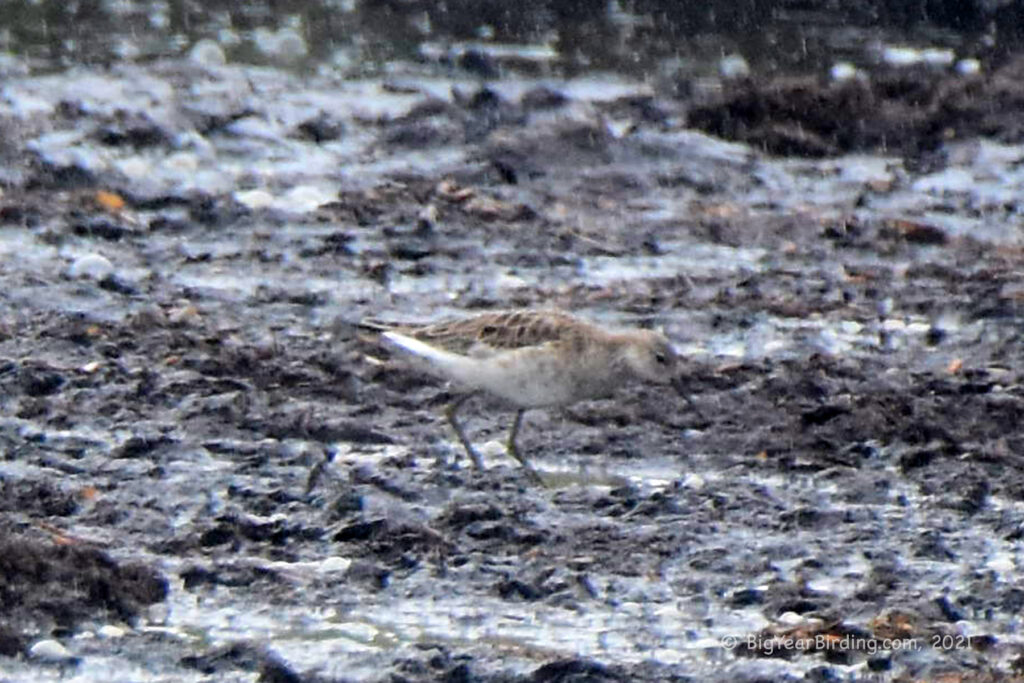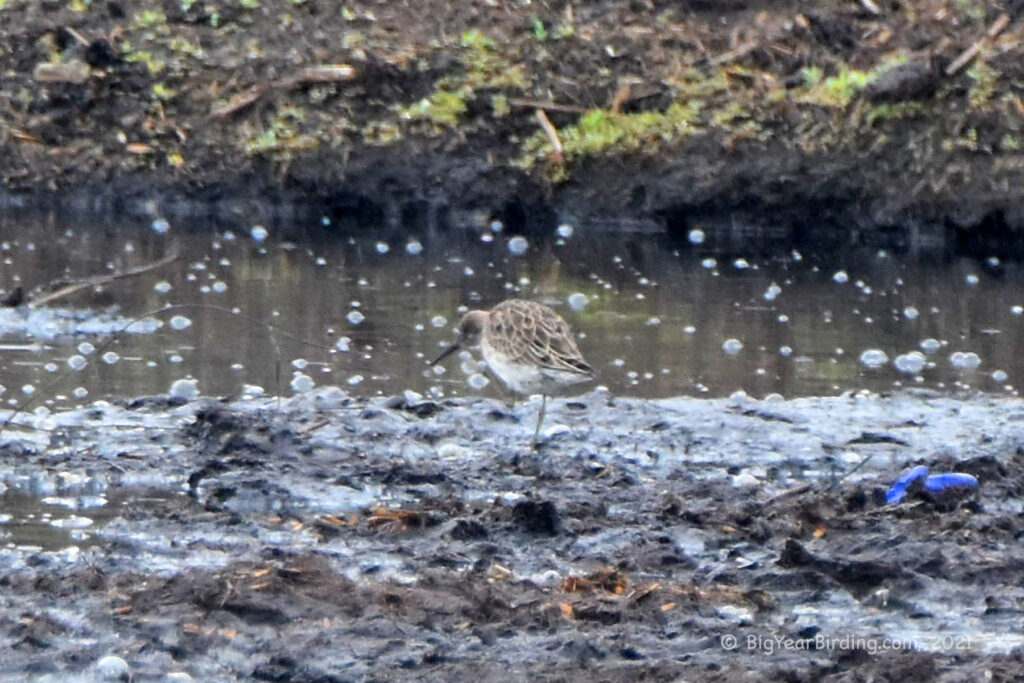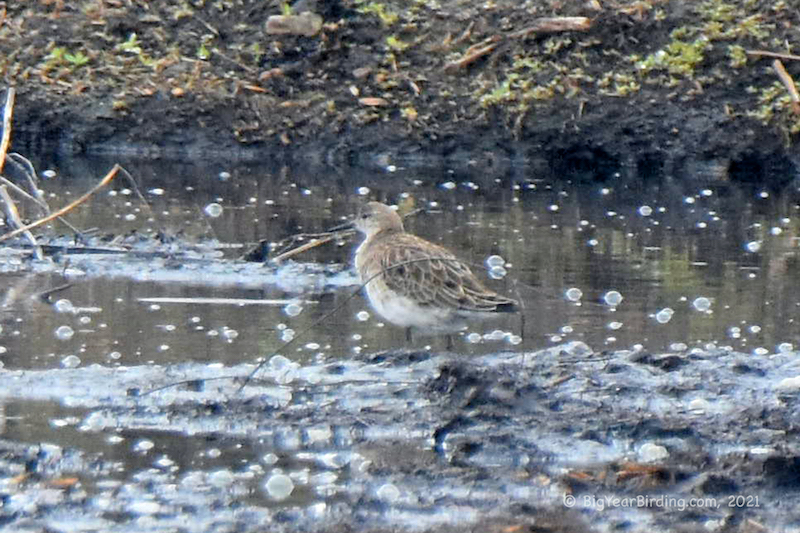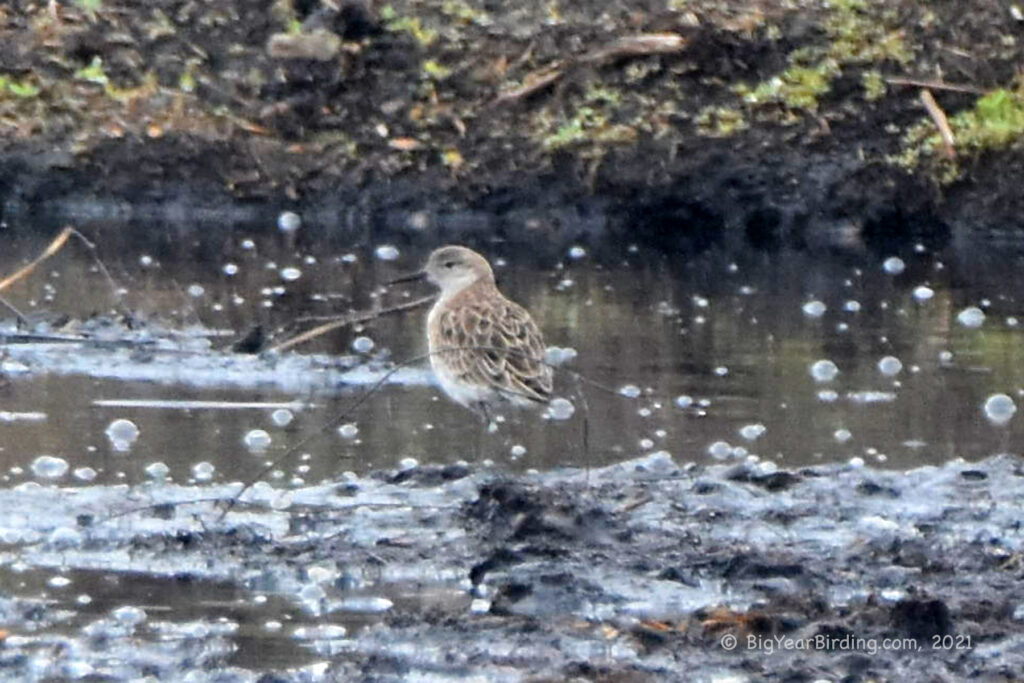The Ruff (Calidris pugnax) is a medium-sized wading bird, measuring approximately 9-11 inches in length and weighing between 3.5 and 5 ounces. The males are larger and more brightly colored than the females, with a distinctive collar of feathers around their necks during breeding season. The females and non-breeding males have more subdued plumage, typically brownish-gray with darker streaks on their backs and lighter underparts.

The Ruff is known for its unique breeding behavior, with males forming leks where they display for females by puffing up their neck feathers and performing elaborate courtship displays. This behavior is most commonly observed during their breeding season from May to July, primarily in northern Europe and Asia.
Ruffs are migratory birds and can be found in various parts of the world during different times of the year. They breed in the wetlands and bogs of northern Europe and Asia, migrating to Africa, India, and Southeast Asia during the winter months. Some populations of Ruffs, particularly those in North America, breed in the Arctic and migrate south to South America for the winter.
Distinguishing field marks of the Ruff include their medium-sized bill, long wings, and relatively short tail. Their distinctive breeding plumage in males includes a ruff of feathers around their necks, which can range in color from white to black, as well as a colorful collar of feathers on their upper breast. The females and non-breeding males have more muted plumage, typically brownish-gray with darker streaks on their backs and lighter underparts.

Overall, the Ruff is a fascinating bird with a unique breeding behavior and distinctive plumage. Its migratory habits make it a valuable indicator of wetland health in different parts of the world, and its presence in different habitats during different times of the year make it a fascinating subject for birdwatchers and ornithologists alike.


